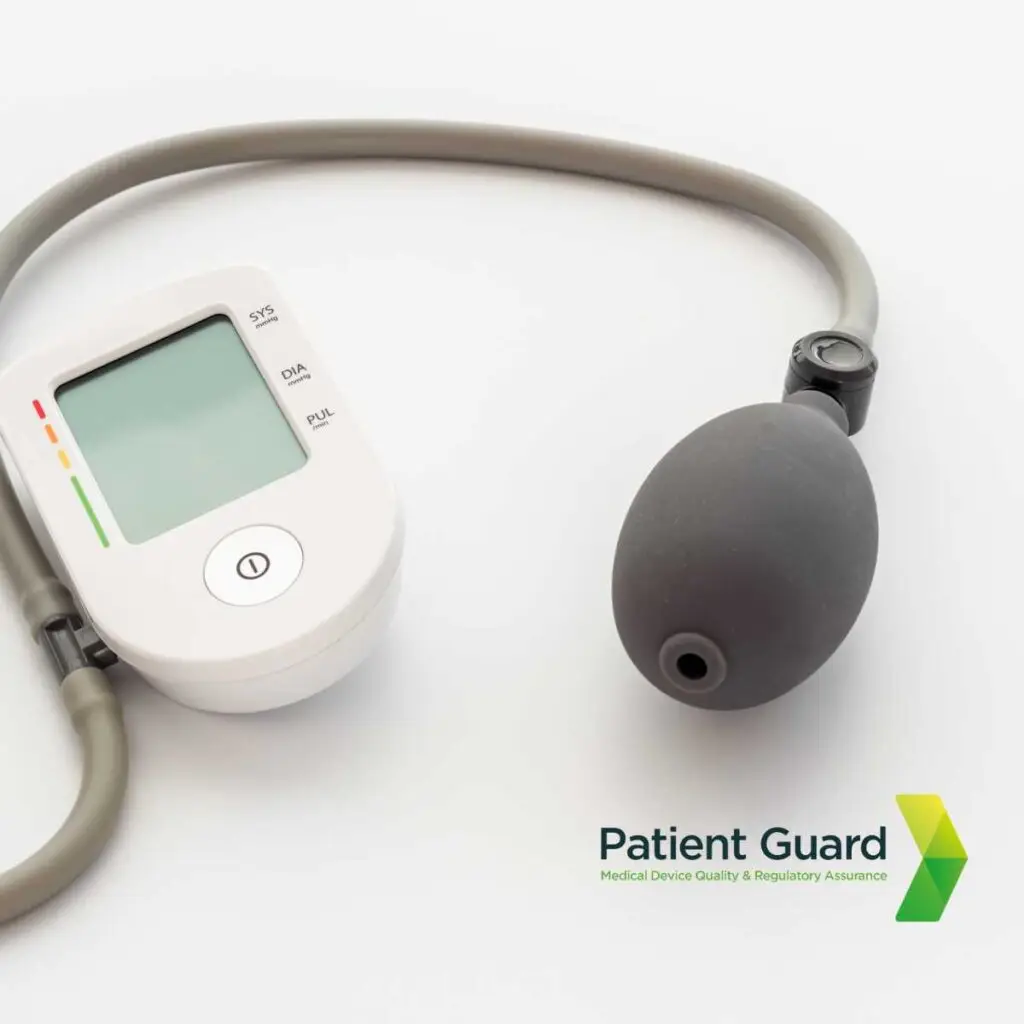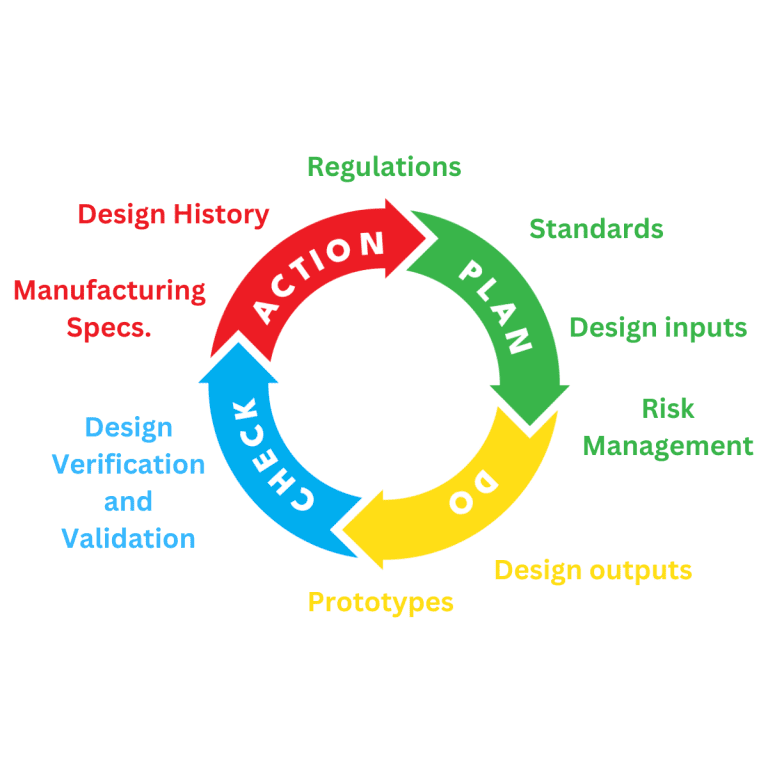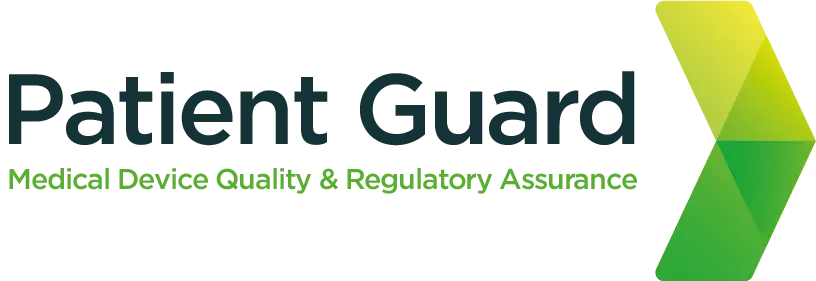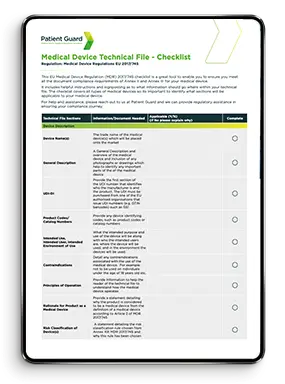Home » EU MDR Medical Device Determination Tool
EU MDR Medical Device Determination Tool
Our EU MDR Medical Device Determination software tool allows you to identify if your product should be regulated as a medical device according to the EU MDR 2017/745 regulation

EU MDR Medical Device Determination Tool
Welcome to the Patient Guard Medical Device Determination tool for the EU MDR (EU 2017/745) regulatory framework. To get started, answer the following series of questions relating to your product, and the software tool will identify if your product is a medical device or falls under the requirements as a medical device based on the definition in Article 2 of EU MDR 2017/745.
Previous Answers:
Is the product to be used for human beings?
Does the product have a medical purpose?
Is the product intended for diagnosis of disease, which does not achieve its principal intended action by pharmacological, immunological or metabolic means, in or on the human body, but which may be assisted in its function by such means?
Is the product intended for prevention of disease, which does not achieve its principal intended action by pharmacological, immunological or metabolic means, in or on the human body, but which may be assisted in its function by such means?
Is the product intended for monitoring of disease, which does not achieve its principal intended action by pharmacological, immunological or metabolic means, in or on the human body, but which may be assisted in its function by such means?
Is the product intended for prediction of disease, which does not achieve its principal intended action by pharmacological, immunological or metabolic means, in or on the human body, but which may be assisted in its function by such means?
Is the product intended for treatment of disease, which does not achieve its principal intended action by pharmacological, immunological or metabolic means, in or on the human body, but which may be assisted in its function by such means?
Is the product intended for alleviation of disease, which does not achieve its principal intended action by pharmacological, immunological or metabolic means, in or on the human body, but which may be assisted in its function by such means?
Is the product intended for diagnosis of an injury or disability, which does not achieve its principal intended action by pharmacological, immunological or metabolic means, in or on the human body, but which may be assisted in its function by such means?
Is the product intended for monitoring of an injury or disability, which does not achieve its principal intended action by pharmacological, immunological or metabolic means, in or on the human body, but which may be assisted in its function by such means?
Is the product intended for treatment of an injury or disability, which does not achieve its principal intended action by pharmacological, immunological or metabolic means, in or on the human body, but which may be assisted in its function by such means?
Is the product intended for alleviation of or compensation for an injury or disability, which does not achieve its principal intended action by pharmacological, immunological or metabolic means, in or on the human body, but which may be assisted in its function by such means?
Is the product intended for investigation of the anatomy, which does not achieve its principal intended action by pharmacological, immunological or metabolic means, in or on the human body, but which may be assisted in its function by such means?
Is the product intended for modification of the anatomy, which does not achieve its principal intended action by pharmacological, immunological or metabolic means, in or on the human body, but which may be assisted in its function by such means?
Is the product intended for investigation of a physiological or pathological process or state, which does not achieve its principal intended action by pharmacological, immunological or metabolic means, in or on the human body, but which may be assisted in its function by such means?
Is the product intended for replacement of a physiological or pathological process or state, which does not achieve its principal intended action by pharmacological, immunological or metabolic means, in or on the human body, but which may be assisted in its function by such means?
Is the product intended for modification of a physiological or pathological process or state, which does not achieve its principal intended action by pharmacological, immunological or metabolic means, in or on the human body, but which may be assisted in its function by such means?
Is the product intended for control or support of conception?
Is the product intended for the cleaning, disinfection or sterilisation of devices?
- Contact lenses or other items intended to be introduced into or onto the eye.
- Products intended to be totally or partially introduced into the human body through surgically invasive means for the purpose of modifying the anatomy or fixation of body parts with the exception of tattooing products and piercings.
- Substances, combinations of substances, or items intended to be used for facial or other dermal or mucous membrane filling by subcutaneous, submucous or intradermal injection or other introduction, excluding those for tattooing.
- Equipment intended to be used to reduce, remove or destroy adipose tissue, such as equipment for liposuction, lipolysis or lipoplasty.
- High intensity electromagnetic radiation (e.g. infra-red, visible light and ultra-violet) emitting equipment intended for use on the human body, including coherent and non-coherent sources, monochromatic and broad spectrum, such as lasers and intense pulsed light equipment, for skin resurfacing, tattoo or hair removal or other skin treatment.
- Equipment intended for brain stimulation that apply electrical currents or magnetic or electromagnetic fields that penetrate the cranium to modify neuronal activity in the brain.
Find out more about medical device compliance and regulations

Software as a Medical Device (SaMD)
Software as a Medical Device (SaMD) has revolutionised the healthcare industry. From AI helping with medical image scanning to software

Medical Device Design and Development
Planning for the design and development of a medical device is a requirement of regulatory systems. All manufacturers of Medical

The Biological Evaluation of Medical Devices
In healthcare, ensuring the safety and efficacy of medical devices is paramount. Patients rely on these devices for diagnosis, treatment,

CE Marking Medical Devices
The CE marking of medical devices and in vitro diagnostic devices (IVDs) is a requirement of EU regulations (EU 2017/745

How to Structure a Medical Device Technical File
A medical device technical file is a concise set of documents created by a manufacturer to explain the performance and


